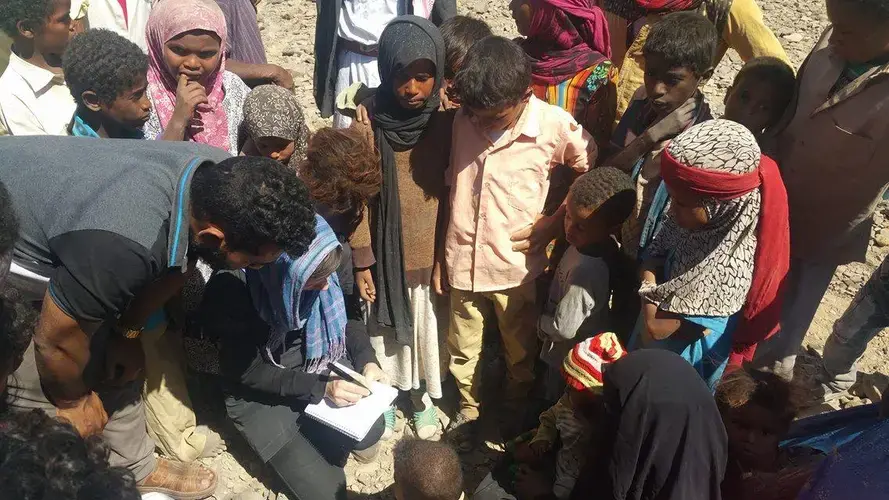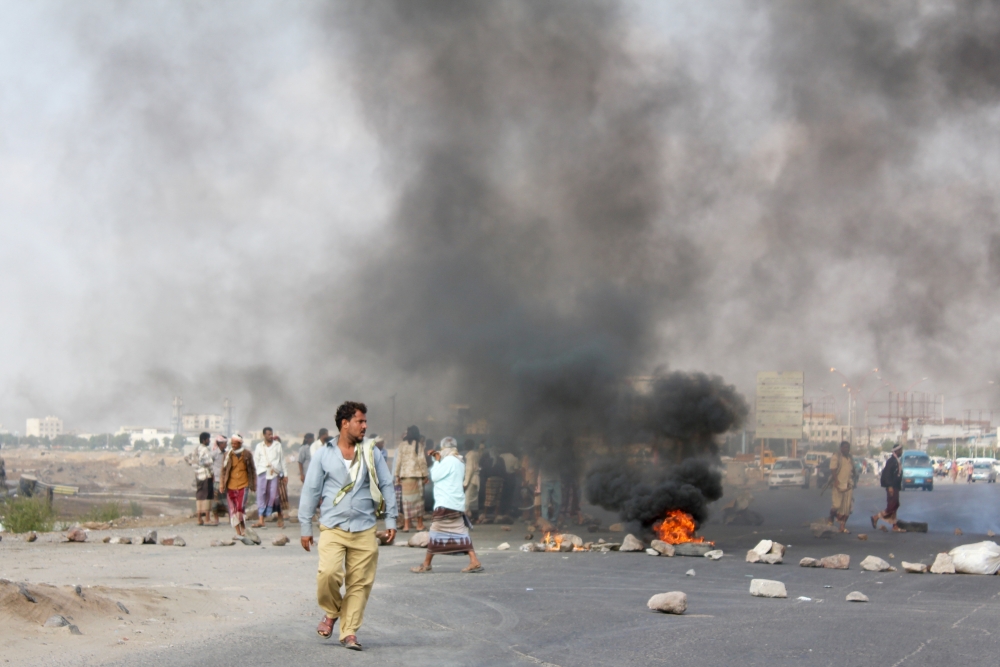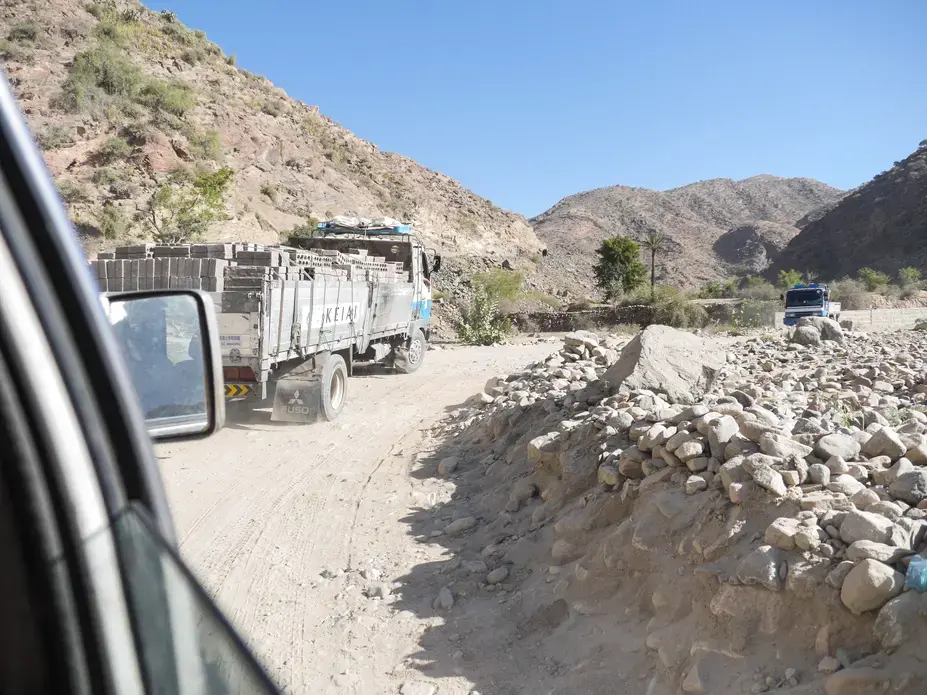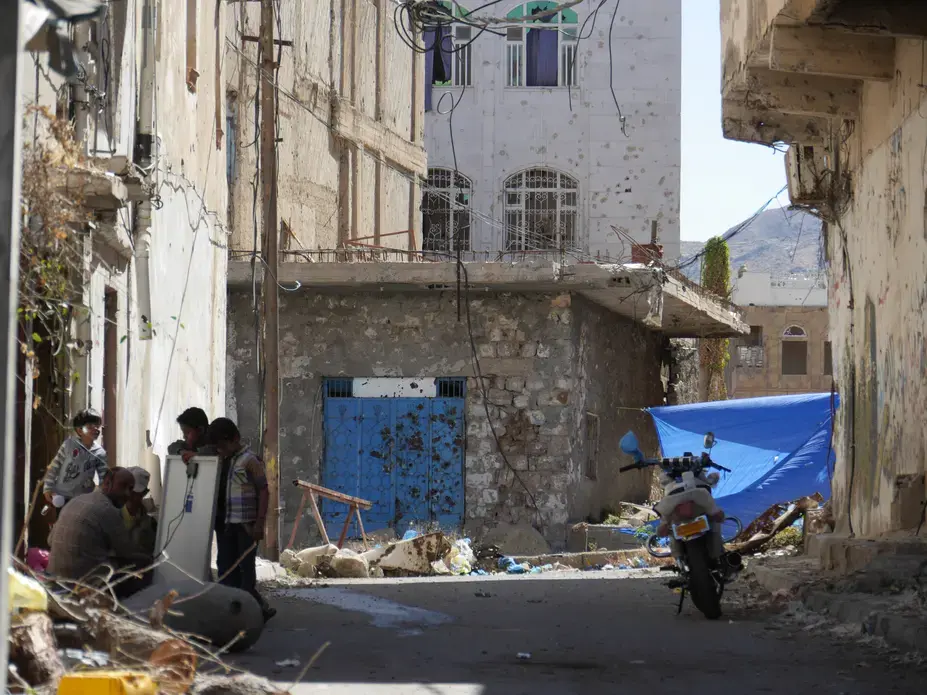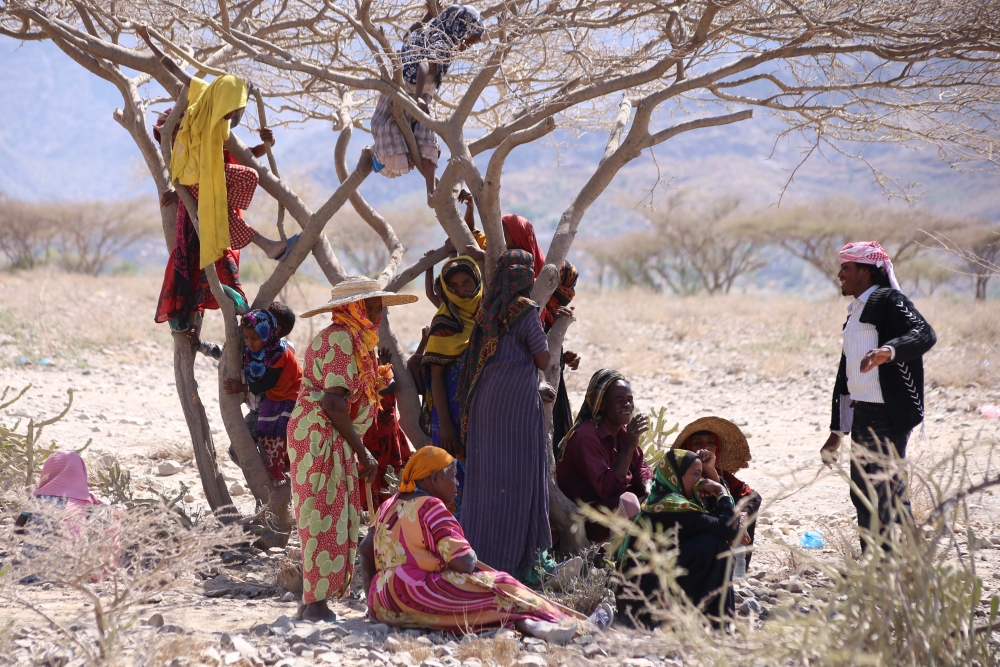
Good to be back
January 1, 2017
My first day back in Yemen since March 2016. It’s the longest time I’ve been away from the country since I moved to live in Sana’a in 2010. It feels good to be back. Greeting my Adeni friend I catch myself just in time, almost forgetting Yemeni etiquette that forbids me from hugging him.
Aden airport has been spruced up since my last visit when the roof was caved in and bullet holes riddled the glass doors. What hasn’t changed is the familiar bedlam of a Yemeni airport. Men clamber over the luggage carousel, others smoke cigarettes as they wait for bags to appear. All jostling and shouting in the relative cool of 28 degrees.
I sit on the side and wait with the women. Dressed all in black with a face covering veil, it’s the best security for the handful of foreigners that pass through here. On a visit in 2015, my bag arrived one month after I turned up on a boat. So I’m relieved to see it eventually appear through the hole in the wall.
Vehicles aren’t allowed to park in the airport car park. A new rule imposed in the wake of car and suicide bombings. I walk the 200 meters down the road with my Adeni friend and Mohammed, the driver who took me across the frontlines at the height of the battle for control of the city in 2015. We drive to another location and switch cars. I send greetings to Mohammed’s family as I hand him a box of Turkish delights for his family. He goes one way and we go another. Airports are a prime spot for anyone who might be scouting for potential targets. Although the security situation has improved since my last visit there are still many unknowns, so we play it safe. It’s been a sleepless 36 hour journey to get here.
Working in the shadows
January 4, 2017
The long-form feature piece I’m working on for this trip is centered on the young suicide bombers being recruited from a single district in southern Yemen. This is part of a parallel conflict being fought alongside the civil war currently dividing the country.
Asking people to talk about IS in a neighbourhood the group has actively recruited from results in a lot of polite and understandable excuses. Not many people are willing to take the risk. My first few days have been busiest late at night, sitting in the dark taking notes by the light of a mobile phone. People here are scared. Others are too distraught to speak. My main priority is protecting their identities, being extremely careful where and how we set up meetings and only doing so via trusted connections with roots in the community. This isn’t Raqqa. But the notoriously brutal militants still have their supporters and, especially in a tight-knit community like this one, word spreads quickly.
There’s a long history in this area of young men joining extremist groups going back decades. My aim is to unravel this history through the story of one of the young men who left to die. Doing so sensitively and safely is a delicate undertaking—one that would be impossible without the help of local friends. It’s the sort of story I would never be able to do in such detail if I hadn’t spent years here. That history helps build trust and connections, which are vital for this kind of piece and are what drew me to the story it in the first place. Over the next few days I plan to speak to family members, close friends and other figures in the community who knew the suicide attacker who will be the focus of the story. I can’t identify any of my interviewees. Putting the story together while avoiding jigsaw identification is going to require careful composition. One of his friends insisted I use his name, asserting that God will be on his side against any possible backlash from IS. But that doesn’t reassure me.
Painting a gruesome picture
January 10, 2017
Today I visited the site of one of the city’s most recent suicide bombings, al-Soluban military camp. Unsurprisingly the soldiers guarding the gate were twitchy. I left my bag in the car as we approached to reduce the risk of them seeing me as a threat. Their base has been attacked three times in the past six months, once by AQAP and twice by IS suicide bombers who targeted new recruits gathering outside the base and soldiers collecting salaries at the back entrance. We quickly draw attention. Soldiers on duty at the gate and a couple of local residents start to congregate. It’s probably the worst spot in the entire city to be standing, let alone in a group. I begin to ask the soldiers if we can speak to them one at a time, away from the entrance to the camp. An officer echoes my thoughts and shouts at his men to get back to their posts. We separate and take one soldier off to speak to. He then tag-teams with the next who comes to be interviewed. I need to be able to recreate the events of that day for readers. I ask the soldiers about sounds and smells, the weather and other intricate details that help build a picture. I speak briefly to a teenage boy living opposite, less than 30 meters from where the bomber detonated. By the time I’ve interviewed the soldiers the boy’s father has gone off to work. We take a telephone number and say we’ll come back another day.
We try various local hospitals looking for survivors. It’s been several weeks since the bombing and the victims were all from a neighbouring governorate. Those that have been discharged have already left the city. In Aden’s largest public hospital injured soldiers and militiamen are kept behind a new locked gate on the stairwell that leads to the top floor, guarded by a soldier who refuses to let us pass. He gives us the name of a security chief we need permission from in order to get in. I sense this might lead us into a very time consuming, bureaucratic black hole. Despite our attempts, explaining I don’t want to take pictures and showing my Yemeni press card, the armed guard won’t be swayed.
On the road to Taiz
January 16, 2017
My last visit to Yemen’s third largest city was in September 2015, at the beginning of what turned into a year-long siege imposed by forces loyal to the country’s former president of 33 years, Ali Abdullah Saleh, and his Houthi rebel allies. Food, water and medical supplies were blocked from reaching the city’s civilian population inside the enclave. For many months supplies were smuggled up and then down a 3,000 meter high mountain, on foot or strapped to the backs of donkeys. Now the siege has been partially lifted with the south side of the city under the control of the anti-Houthi ‘resistance’ fighters while the north remains under Houthi/Saleh control. At the moment there is only one road access into the anti-Houthi territory—the one we’re taking from the southern city of Aden. The pre-war journey would have taken less than two hours. Now it’s just over five hours in an SUV and it means navigating a stretch of dry river bed that will cut the access route off again once the rains come in April. But it’s an easier journey than September 2015, which took some eight hours. Trucks laden with everything from food and fuel to solar panels and medical supplies have to take this section of off-road route to get into the city. If you want to go north, the 15-minute trip across town has become a five hour trip around a mountain range to circumnavigate the blockade.
We took the journey in a trusty a 30 year-old Land Cruiser which rattled and squeaked its way over the rocks and sand. On the way we stopped at a local hospital hosting a feeding centre for malnourished children. Taiz governorate malnutrition rates put it at one level below famine. It is predicted to worsen in the months ahead.
Inside the city the people of Taiz haven’t had running water or electricity for almost two years. Large parts of the city are in ruins with many residents too afraid to return even to the so-called ‘liberated’ areas.
Hidden in the hills
January 18, 2017
A long day. We started at dawn. Initially we were due to head straight out of the city on the southwest route to a village in the mountains and then on to a makeshift camp in al-Waziah where people were fleeing. But at dawn we were still chasing an interview that fell through late last night with one of the Salafi militia leaders. We head to his house. A pick-up truck is parked outside with his brigades logo emblazoned on the hood. We stand outside making calls. A lady’s voice can be heard at an upstairs window. I have to stand in the middle of the road so she can see that there is indeed a foreigner outside waiting to speak to the ‘emir’. After 45 minutes of waiting and numerous phone calls it’s clear we’re not going to make progress. We give up. I call an old journalist friend from Sana’a. Mohammed al-Qahdi has been covering the conflict in Taiz virtually non-stop for almost two years. He can’t go back home to his family in the capital because of his reporting. We meet for a quick breakfast before saying farewell as we head out of the city to visit some of the women and children hit hardest by this war.
The day turns into a deeply depressing one. The poorest of Yemeni society are bearing the brunt of a war being orchestrated by belligerents living in luxury in far off cities. In the meantime any end to the conflict appears more distant than ever. If there’s one thing that sets Yemenis apart from their regional neighbours it is their unwavering resilience. But in the face of seemingly endless extreme hardship there has to be a breaking point, even in a society well practiced at caring for its own in the total absence of a state. That breaking point, for the first time in my six plus years of reporting on the country, appears startlingly tangible. It’s quite clear that the worst of the suffering, where most people are dying, is happening in places a long way from the battle fields of this war in some of the most remote parts of the country that no one—journalists, aid agencies or medical practitioners—will ever reach.
